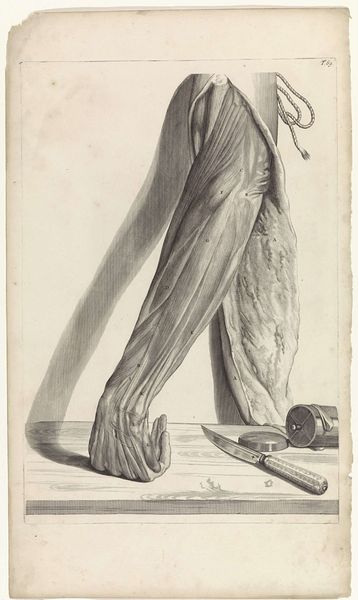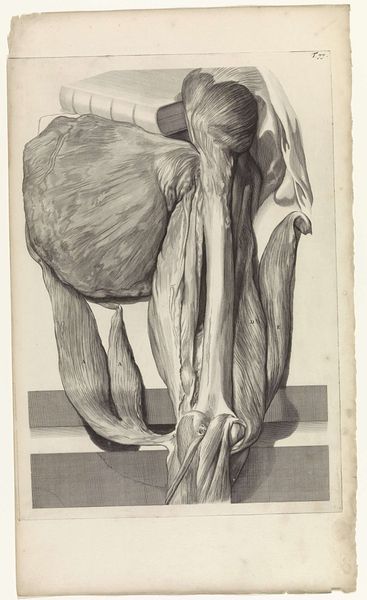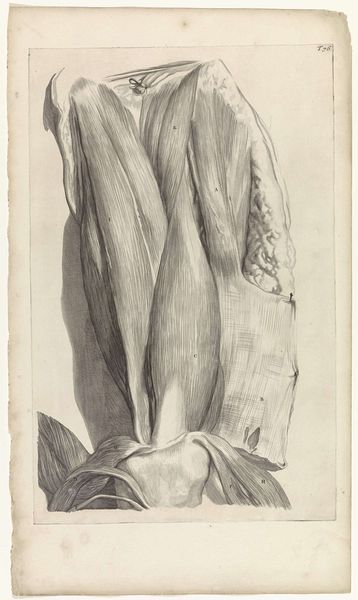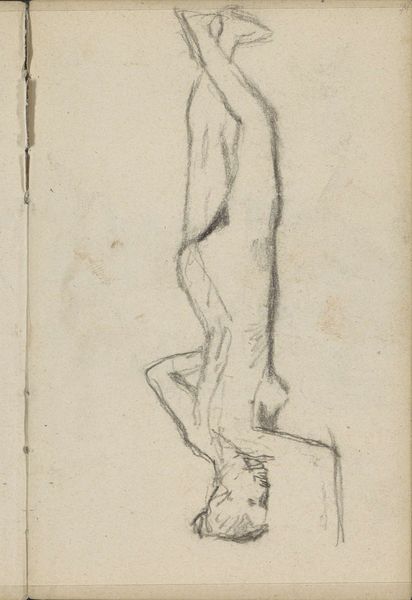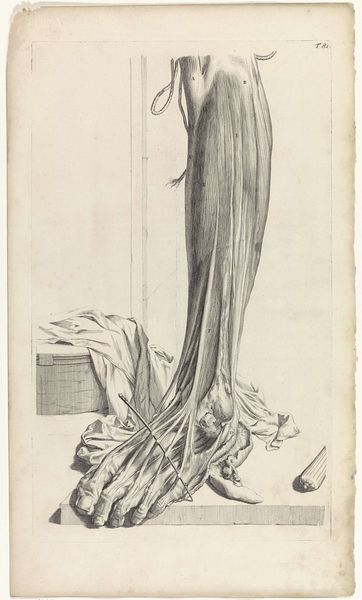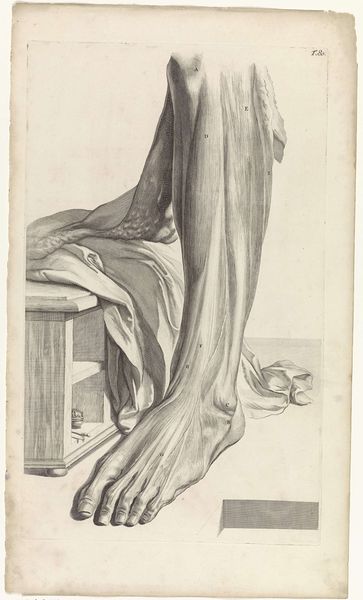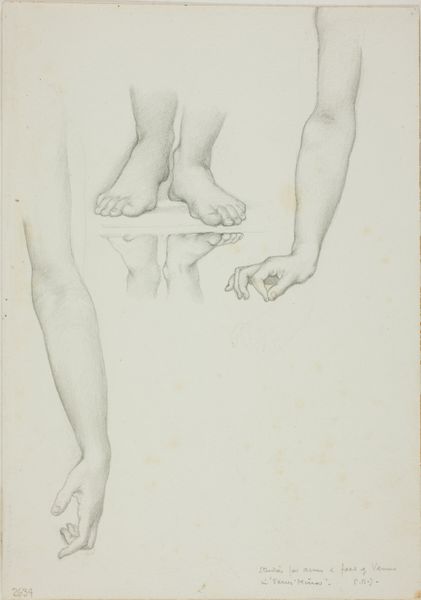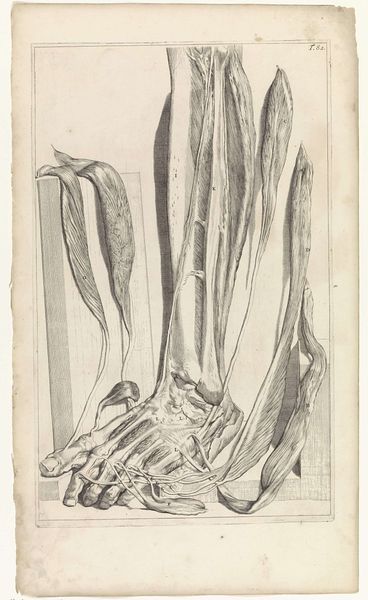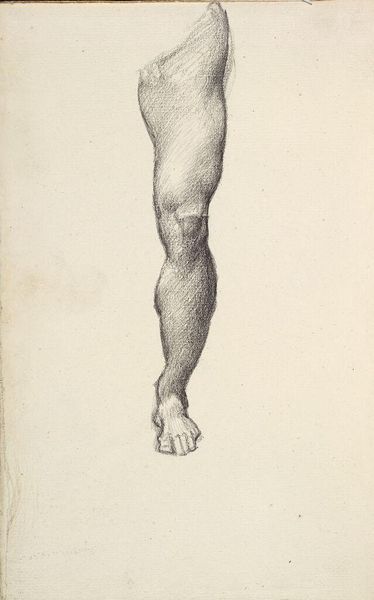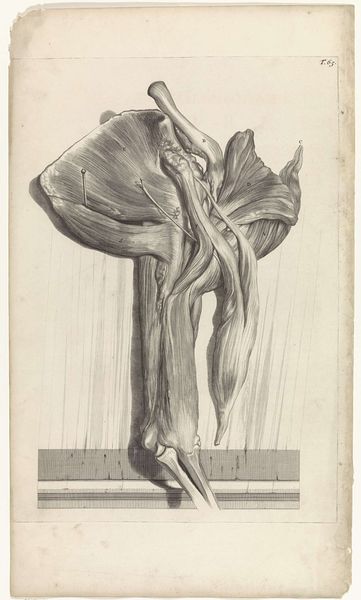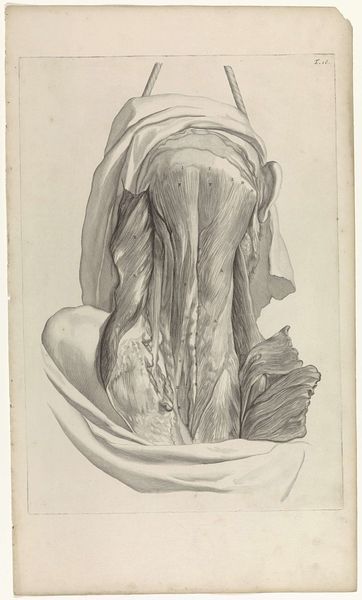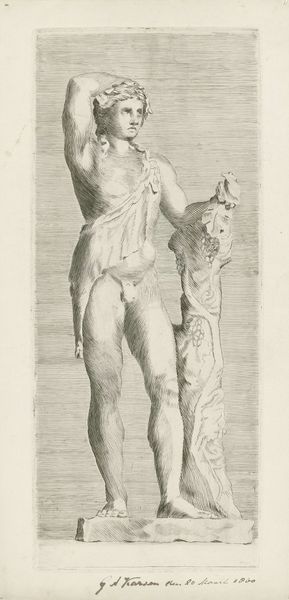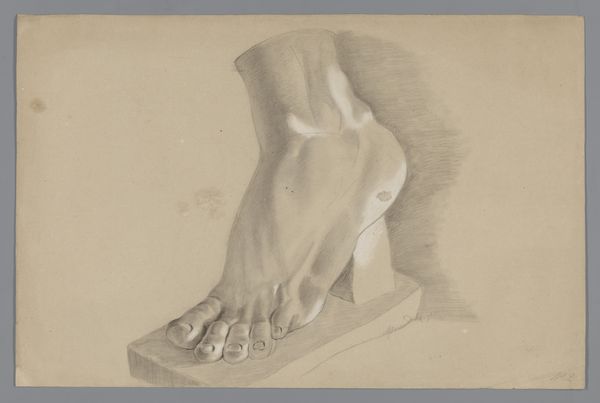
drawing, pencil
#
pencil drawn
#
drawing
#
pencil sketch
#
figuration
#
pencil drawing
#
pencil
#
history-painting
#
academic-art
#
realism
Dimensions: width 321 mm, height 475 mm
Copyright: Rijks Museum: Open Domain
Curator: Pieter van Gunst created this anatomical study in 1685, titled "Anatomische studie van de onderkant van de rechtervoet"—that is, "Anatomical study of the underside of the right foot." It's now housed here at the Rijksmuseum. Editor: It's surprisingly elegant for an anatomical drawing! The shading and linework create a sculptural quality. What medium did van Gunst employ? Curator: He used a precise pencil, resulting in incredibly detailed realism. Note how the leg appears truncated; this aesthetic, combined with the clinical observation, creates a symbolic connection to mortality, mirroring a vanitas still life. Editor: I see what you mean. The severing evokes ideas of labor, the foot representing potential and movement literally cut short. Looking closely, you can practically feel the textures – the taut skin, the rough-hewn wooden block supporting the limb. This speaks volumes about the practice of anatomical study at the time, emphasizing direct engagement with the dissected body. Curator: Absolutely. The precise lines serve not only to depict but to codify knowledge about the human body. There is a continuity with images of wounded or vulnerable feet throughout art history, religious and secular. Here, the academic nature allows for dispassionate consideration, but one still detects vulnerability in its presentation. Editor: The dispassionate is crucial; there’s a certain cool detachment that belies the raw reality. It almost feels mass-producible. And, of course, as a drawing, the image itself can be disseminated. Van Gunst’s craft highlights the changing means of understanding—and controlling—the material human body. Curator: That potential for broader dissemination definitely influenced the piece, echoing broader shifts toward scientific inquiry and a move toward democratized knowledge, even pertaining to the body. Editor: It does make me think about the art market too – even anatomical studies like this were commodities being circulated in print form to fuel new types of consumerism, no? Well, regardless, what a fascinating rendering of flesh and bone reduced to paper. Curator: Indeed. An artwork revealing the very fabric of human form and of early scientific understanding.
Comments
No comments
Be the first to comment and join the conversation on the ultimate creative platform.
